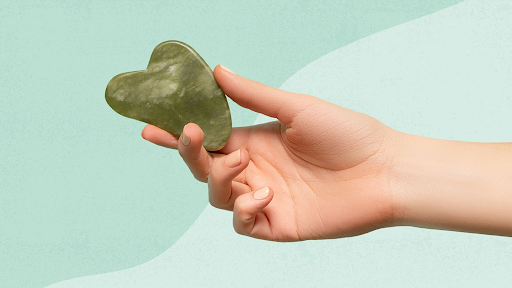Cupping Therapy: Benefits, How It Works, and What to Expect

Exploring Traditional Chinese Medicine: Acupuncture, Cupping, and Gua Sha
November 14, 2024
The Ultimate Guide to Gua Sha: Benefits, Techniques, and How to Get Started
January 22, 2025Cupping therapy, an ancient practice rooted in Traditional Chinese Medicine (TCM), has gained significant traction as an alternative approach to alleviate pain, reduce stress, and enhance overall wellness. This holistic method involves placing suction cups on the skin to improve blood circulation and facilitate healing. Historical records trace cupping back to ancient China, Egypt, and the Middle East.
Increasing Popularity
The growing interest in natural therapies has propelled cupping into mainstream wellness practices. Individuals seeking relief from musculoskeletal pain, anxiety, and other ailments often turn to cupping for its non-invasive yet effective results.
Cho Acupuncture & Herbal Clinic
For those intrigued by cupping therapy, Cho Acupuncture & Herbal Clinic stands as a premier resource. Located in Norcross and Sandy Springs, Georgia, this clinic offers a comprehensive suite of TCM services designed to promote holistic health.
What to Expect
Patients can anticipate a detailed guide on what occurs during a cupping session. This encompasses preliminary consultations with healthcare providers, thorough discussions of medical history, and an outline of the treatment process.
By exploring the benefits of cupping therapy and understanding how it works, individuals can make informed decisions about integrating this ancient practice into their wellness routines.
Understanding Cupping Therapy
What is Cupping Therapy?
Cupping therapy is an ancient healing practice rooted in several cultures, including those of China, Egypt, and the Middle East. This therapeutic technique involves placing cups on the skin to create suction. The primary goal is to enhance blood flow, alleviate pain, and promote overall well-being.
The Concept of Suction for Healing
The underlying principle of cupping therapy revolves around suction. By creating a vacuum effect within the cups, this method helps improve circulation, remove toxins from the body, and stimulate the body’s natural healing processes. Suction pulls the skin and underlying tissues into the cup, leading to increased blood flow in targeted areas.
Types of Cupping Therapies
Cupping therapy can be categorized into several types:
- Dry Cupping: This method involves placing suction cups on the skin without any incisions. The vacuum effect is created using a pump or heat.
- Wet Cupping: Also known as Hijama, wet cupping involves making small incisions on the skin before applying the cups. This allows some blood to be drawn out along with toxins.
- Fire Cupping: A traditional technique where a flame is used to heat the inside of glass cups before placing them on the skin. The cooling air inside creates suction.
Materials Used in Cupping Therapy
Various materials are utilized for making cupping devices:
- Glass Cups: Commonly used in fire cupping due to their ability to withstand heat.
- Plastic Cups: Often used with pumps for creating suction; these are durable and easy to sterilize.
- Bamboo Cups: Traditional and eco-friendly, bamboo cups are lightweight but less commonly used today.
- Ceramic Cups: Similar to glass in terms of durability but heavier.
- Metal Cups: Rarely used due to potential discomfort; however, they offer strong suction.
- Silicone Cups: Flexible and easy to use, silicone cups are popular for self-care at home.
By understanding these diverse aspects of cupping therapy—from its ancient origins to its modern applications—you can appreciate why this age-old practice continues to gain popularity as a viable alternative therapy for various ailments.
The Mechanisms Behind Cupping Therapy’s Effectiveness

Understanding how cupping therapy works provides insight into why this ancient practice continues to be a popular alternative treatment. The mechanisms behind cupping therapy’s effectiveness can be broken down into several key components.
1. Stimulating Large Nerve Fibers
Cupping therapy involves creating suction on the skin, which stimulates large nerve fibers. These fibers have the capacity to block pain signals from smaller nerve fibers. By doing so, cupping can reduce pain perception in the treated area. This principle is akin to the “gate control theory of pain,” where non-painful input closes the nerve gates to painful input, effectively blocking pain sensation.
2. Enhancing Blood Flow
The suction created during a cupping session pulls blood to the surface of the skin. This increased blood flow expands capillaries and promotes better circulation. Enhanced circulation means that more oxygen and nutrients are delivered to tissues, facilitating quicker healing and recovery. Improved blood flow also helps remove waste products and toxins from the body, contributing to an overall sense of well-being.
3. Role of Nitric Oxide
Nitric oxide plays a significant role in promoting better circulation during cupping therapy. This molecule is a vasodilator, meaning it helps relax and widen blood vessels. When cups are applied, the localized pressure causes an increase in nitric oxide production, further aiding in the dilation of blood vessels and improving blood flow.
4. Cellular Response
Cupping therapy also triggers cellular responses that aid in healing. The negative pressure created by suction induces a mild inflammatory response, provoking an influx of immune cells to the area. These cells help repair damaged tissues and reduce inflammation, contributing to pain relief and accelerated healing.
5. Myofascial Release
Another important aspect of how cupping works is its effect on myofascial tissue—the connective tissue surrounding muscles and organs. The suction helps release tension in these tissues, improving flexibility and reducing muscle stiffness. This makes cupping particularly effective for conditions like back pain and muscle tightness.
Understanding these mechanisms offers a comprehensive look at why cupping therapy can be an effective treatment for various ailments, making it a valuable addition to holistic health practices like those offered at Cho Acupuncture & Herbal Clinic.
By breaking down these processes, we get a clearer picture of how cupping achieves its therapeutic effects, laying the groundwork for exploring its numerous benefits in greater detail.
Exploring the Benefits of Cupping Therapy

Physical Benefits
1. Relief from Musculoskeletal Disorders
One of the most well-documented benefits of cupping therapy is its effectiveness in alleviating pain associated with musculoskeletal disorders. Common conditions such as back pain and neck pain often see significant improvement. The suction created by the cups helps to:
- Increase blood flow: Enhanced circulation to the affected area aids in faster healing of muscle tissues.
- Reduce muscle tension: The decompression of tight muscles can provide immediate relief from discomfort.
2. Improved Range of Motion
Athletes and individuals with limited mobility find cupping therapy beneficial for improving their range of motion. By loosening tight muscles and fascia, it allows for greater flexibility and movement.
Emotional Well-Being Benefits
1. Stress Reduction
Cupping therapy goes beyond physical relief. It has profound effects on emotional well-being, especially in reducing stress levels. The following mechanisms contribute to this benefit:
- Relaxation response: The therapy induces a deep state of relaxation, similar to that achieved through massage or meditation.
- Endorphin release: The process stimulates the release of endorphins, which are natural mood lifters.
2. Anxiety Relief
Many individuals report a significant reduction in anxiety symptoms post-treatment. The calming effect of cupping therapy can help:
- Balance the autonomic nervous system: This balance results in decreased sympathetic (fight or flight) activity and increased parasympathetic (rest and digest) activity.
- Promote mental clarity: The increased oxygenation and blood flow to the brain can help clear mental fog and enhance focus.
Understanding these benefits can guide you toward making an informed decision about incorporating cupping therapy into your wellness routine.
Complementary Treatments to Enhance Your Cupping Experience
Integrating cupping therapy with other alternative therapies for pain relief can amplify its benefits. At Cho Acupuncture & Herbal Clinic, several complementary treatments are available:
- Acupuncture: This ancient technique involves the insertion of fine needles at specific points on the body to balance energy flow and alleviate various ailments. Combining acupuncture with cupping enhances circulation and promotes deeper muscle relaxation.
- Herbal Treatments: Custom herbal prescriptions tailored to individual health needs can complement cupping therapy. These herbs support internal healing processes, addressing conditions like hormonal imbalances and immune system disorders.
- Guasha: Involves scraping the skin with a smooth-edged tool to improve circulation and release muscle tension. When used alongside cupping, guasha can expedite recovery from injuries and reduce inflammation.
- Moxibustion: Utilizing the warmth of burning herbs to stimulate acupuncture points, moxibustion can enhance the effectiveness of cupping by promoting better blood flow and reducing stress.
Combining these therapies provides a holistic approach to wellness, addressing both physical and emotional health concerns.
What to Expect During a Cupping Session?
Understanding cupping therapy and knowing what to expect can make your experience smoother and more beneficial. Here’s a detailed guide on preparing for and experiencing a cupping session at Cho Acupuncture & Herbal Clinic.
Before Your Session
Preparation is key to a successful cupping therapy session. Here are some steps to consider:
- Consult with Healthcare Providers: It’s essential to discuss your interest in cupping therapy with your primary healthcare provider, especially if you have underlying health conditions.
- Discuss Medical History: Share your complete medical history with your practitioner at Cho Acupuncture & Herbal Clinic. This includes any chronic illnesses, previous treatments, or current medications. This information helps tailor the therapy to your specific needs.
During the Session
A typical cupping session involves several steps designed to maximize the therapeutic benefits:
- Initial Assessment: The practitioner will begin by assessing your condition. This step may include pulse diagnosis, visual inspection, and discussion of symptoms.
- Preparation of Cups: Depending on the type of cupping (dry, wet, fire), different materials like glass or silicone cups are prepared.
- Application of Suction Cups:
- Dry Cupping: Cups are placed on the skin and suction is created using a pump or heat.
- Wet Cupping: Involves small incisions on the skin before applying suction to draw out blood.
- Fire Cupping: A flame is used to heat the inside of glass cups before placing them on the skin.
- Duration: The cups typically remain in place for 5-20 minutes, depending on the treatment plan.
- Removal of Cups: The practitioner gently removes the cups, ensuring minimal discomfort. The skin may appear red and feel warm due to increased blood flow.
Aftercare
Post-treatment care is crucial for maintaining the benefits of cupping therapy:
- Temporary Marks: Expect temporary red marks or bruises where the cups were placed. These marks are usually painless and fade within a few days.
- Hydration: Drink plenty of water post-session to help flush out toxins released during the treatment.
- Rest: Allow your body time to rest and recover. Avoid strenuous activities immediately after your session.
- Follow-up Sessions: Depending on your condition, multiple sessions may be recommended for optimal results.
By understanding these aspects, you can better prepare for your cupping therapy session at Cho Acupuncture & Herbal Clinic and maximize its benefits for pain relief, stress reduction, and overall wellness.
Safety Considerations When Trying Cupping Therapy

When considering cupping therapy, understanding potential side effects and risks is crucial. Many people ask, “Does cupping hurt?” The sensation varies; some may experience mild discomfort or a pulling feeling during the treatment.
Potential Side Effects
- Mild Discomfort: The suction created by the cups can cause a pulling sensation that may be uncomfortable for some individuals.
- Bruising: Temporary red marks or bruises are common due to the suction effect on the skin. These typically fade within a few days.
Risks of Improper Technique
- Skin Irritation: Incorrect application can lead to skin irritation or burns, especially with fire cupping.
- Infection: Wet cupping involves small incisions which carry a risk of infection if not properly sterilized.
Ensuring that your cupping therapist is qualified and experienced minimizes these risks significantly. Always discuss any concerns or pre-existing conditions with your practitioner before starting therapy.
Who Should Avoid Cupping?
Certain individuals should exercise caution and consult with healthcare providers before undergoing cupping therapy. This includes:
- People with Bleeding Disorders: Individuals with conditions such as hemophilia or those taking anticoagulant medications should avoid cupping due to the increased risk of bleeding and bruising.
- Pregnant Women: Pregnant women, especially those in their first trimester, should seek medical advice before trying cupping therapy.
- Individuals with Skin Infections: Those with skin infections, wounds, or severe skin conditions like eczema or psoriasis should avoid cupping to prevent aggravation.
- Patients with Severe Chronic Illnesses: People suffering from serious health conditions such as heart disease or advanced diabetes should consult healthcare professionals to ensure cupping is safe for them.
Always discuss any underlying health issues with a qualified healthcare provider to determine if cupping therapy is appropriate for your condition.
Discover Customized Treatment Plans at Cho Acupuncture & Herbal Clinic!
Cho Acupuncture & Herbal Clinic offers personalized treatment plans tailored to your unique health needs. By integrating cupping therapy with other modalities such as acupuncture and herbal treatments, the clinic aims to provide a holistic approach to wellness.
It’s essential to consult with qualified healthcare providers before starting any new treatment plan to ensure safety and effectiveness. At Cho Acupuncture, experienced practitioners like Una Cho assess your condition thoroughly, creating a customized plan for optimal results.
Discover the benefits of cupping therapy today! Visit Cho Acupuncture & Herbal Clinic to learn more.





